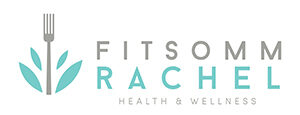How to taste wines like a pro

How to Taste Wines Like a Pro
Wine tasting is more than just sipping a glass of fermented grape juice; it’s an art, a science, and a sensory adventure that engages all your senses. Whether you’re a novice or a seasoned connoisseur, there’s always more to discover in a glass of wine.
Learning how to taste wines is a straightforward adventure that will deepen your appreciation for both wines and winemakers. Look, swirl, smell, taste—starting with your basic senses and expanding from there you will learn how to taste wines like the pros in no time. Keep in mind that you can smell thousands of unique scents, but your taste perception is limited to salty, sweet, sour, bitter and umami. It is the combination of smell and taste that allows you to discern flavor.
Step 1: Sight
Look at your wine. Hold the glass at a slight angle.
• Color: Swirl the wine in the glass to observe its color. Red wines can range from pale ruby to deep purple, while white wines may vary from pale straw to golden yellow. The color can provide insights into the wine’s age and grape variety. Is it light in color, indicating a lighter taste? What color is the red wine? Is it more of a purple, ruby red color indicating a young wine or turning into more of a garnet color, indicating an older wine? Is your white wine a straw or light-yellow color, indicating a younger white or does it have a golden hue, indicating an older white wine?
• Clarity: Check for any particles or cloudiness in the wine, which can indicate a flaw. A clear, bright wine is usually a good sign.
Step 2: Swirl
Swirl the wine carefully to coat the sides of the glass. By doing this, it helps the wine release its aromas. Also, if you observe heavy drip lines, “tears” or “legs” that form on the side of the glass, known as viscosity, there is probably high alcohol content and more residual sugar in the wine.
Step 3: Smell
Our sense of smell is critical in properly analyzing a glass of wine. You cannot taste wine without smelling it! To get a good impression of your wine’s aroma, swirl your glass for a solid 10 to 12 seconds (this helps vaporize some of the wine’s alcohol and release more of its natural aromas). Put your nose into the glass and smell the wine by slowly inhaling.
• First Impression: Take note of your initial impression of the wine’s smell. What do you notice? Is it fruity, floral, earthy, or oak? Remembering what wines smell like will help you remember similar wines later so you can drink more of what you like. For me, the aromas I notice while smelling a wine are the most important in remembering what wines I like.
• Intensity: Consider the intensity of the aromas. Are they subtle or pronounced?
• Complexity: Try to identify different scents within the wine. Wine can have a wide range of aromas, from fruit and flowers to spices and oak.
Step 4: Taste
Take a sip. What does it taste like? Does it taste like anything you smelled? Do you like the wine? Great wines tend to have complex flavors and a nice balance. Is it mouthwatering? Fresh, crisp white wines give you that mouth cleaning, acidity. If you are drinking red wine, the drying sensation is from the tannins. Think of the below as you taste the wine:
• Taste: Assess the wine’s flavor profile. Is it fruity, dry, sweet, or acidic? Try to identify specific flavors that you perhaps also smelled.
• Body: Consider the wine’s body, which can be light, medium, or full. The body is related to the wine’s alcohol content and mouthfeel.
• Acidity: Note the level of acidity in the wine. It can provide a refreshing, crisp quality or make the wine feel more structured and age-worthy.
• Tannins: In red wines, evaluate the level of tannins. Tannins contribute to the wine’s structure and can make it feel astringent or velvety.
• Finish: Pay attention to the finish, which is the lingering taste after you’ve swallowed the wine. Is it short and quick, or long and flavorful?
Once you’ve gone through these steps, it’s time to evaluate the wine and form an overall impression. Think about whether you enjoyed the wine, and if so, what you liked about it. You can also consider the wine’s potential food pairings, aging potential, and how it compares to other wines you’ve tasted. With practice, you can refine your palate and taste like a pro. Remember, there are no strict rules, everyone’s taste is unique, so trust your senses and savor each glass as an opportunity to learn and enjoy. Cheers to your wine-tasting adventures!
